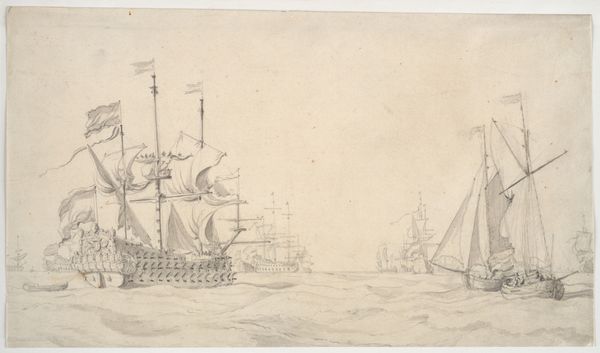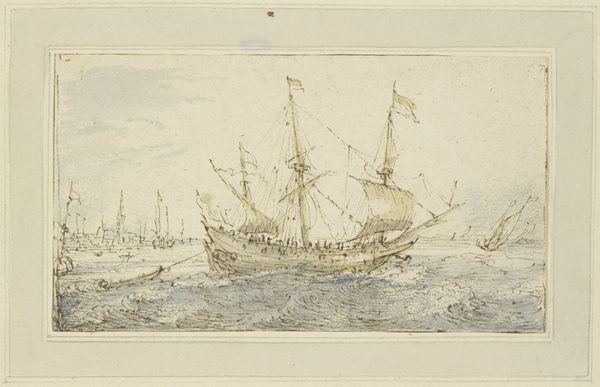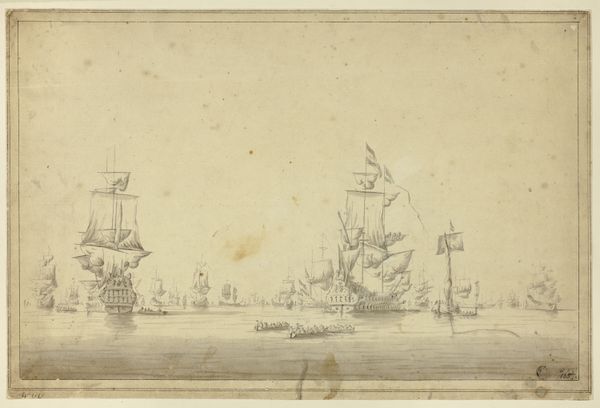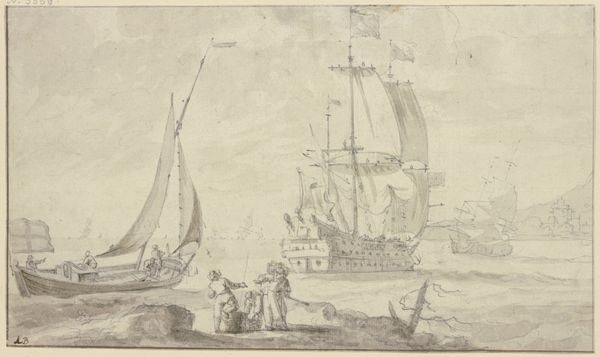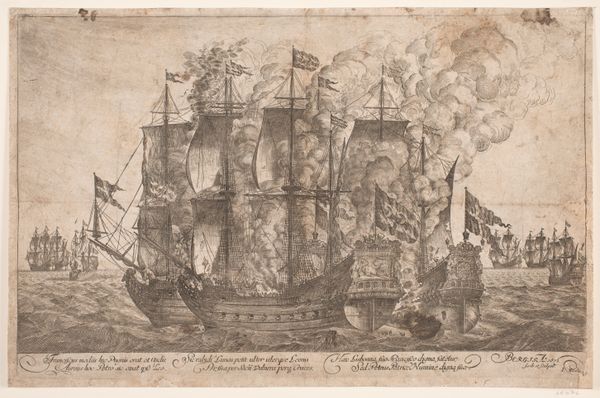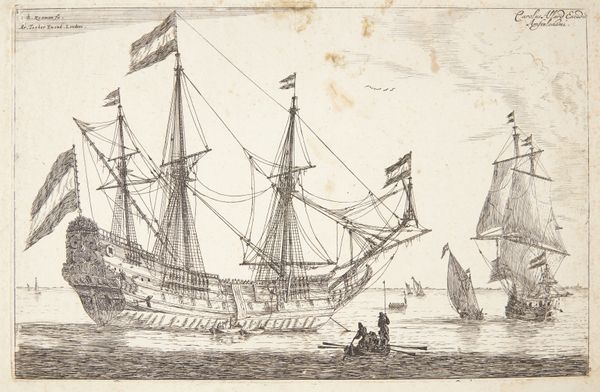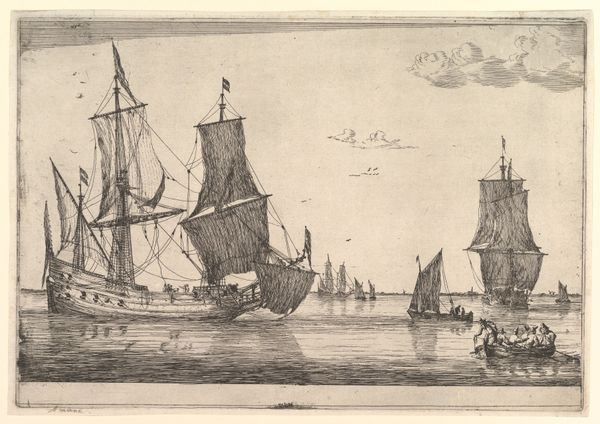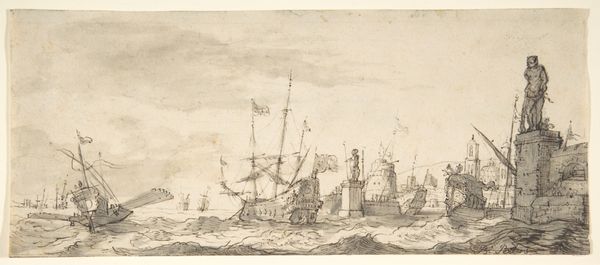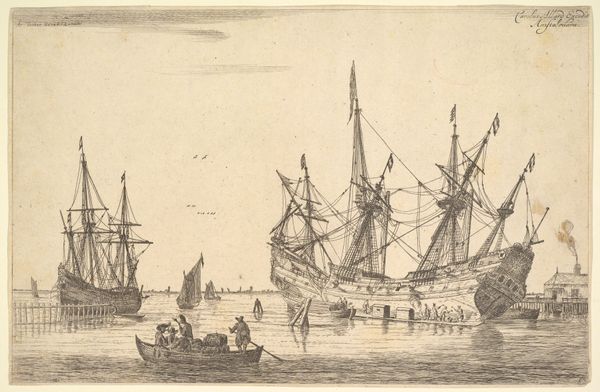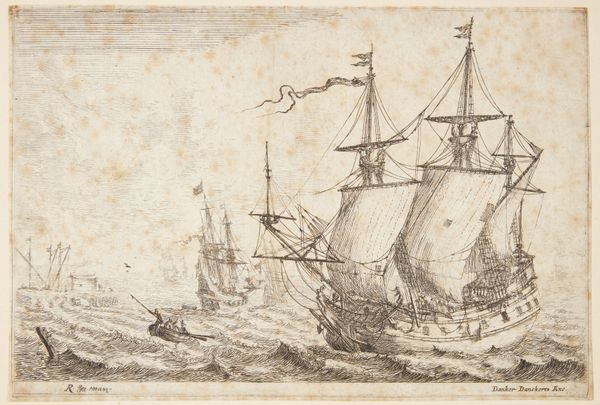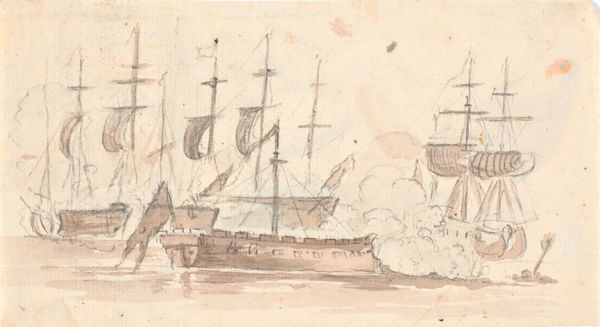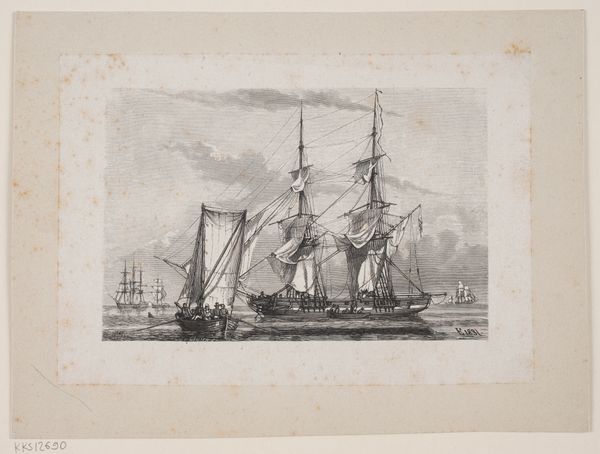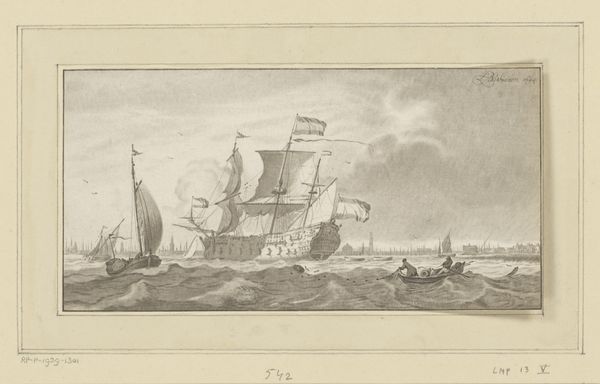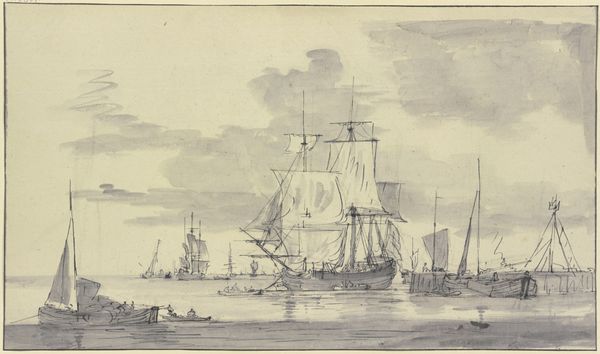
Dimensions: 98 mm (height) x 140 mm (width) (bladmaal)
Curator: C.A. Lorentzen's watercolor drawing, "Søslag," which roughly translates to "Naval Battle", made sometime between 1746 and 1828, is before us. What's grabbing your attention first? Editor: Immediately, the sketched, almost unfinished quality strikes me. There's a rawness here, revealing the process itself—the underdrawing, the delicate washes of color, and the economy of line that gives it an almost urgent, reportage feel. Curator: Precisely! The rapid execution focuses the eye on the disposition of the ships and how they interact, the formal relations of the sails forming an architecture of war on the sea. Consider, too, the use of the oval as a frame to present this encounter, how that choice informs the composition. Editor: It makes me think about the actual labor of seafaring and warfare in the 18th century, not just the strategy and tactics. The shipbuilding, the provisioning, the grueling work of the sailors—all that’s missing. This almost sanitized sketch is so far removed from those realities. Where’s the grit? Curator: I can see your point, however it does offer some nice contrasts with some darker romanticism imagery of naval battle. One could also interpret its aesthetic distance, through the oval framing, through this dreamlike or abstracted watercolor-drawing medium, as actually offering commentary on this labor by omission and implication. Editor: I suppose the unfinished aspect invites the viewer to fill in those gaps. The bare paper becomes a kind of negative space, suggesting the absent realities of production and social structure of warfare in this time. How else could you imagine it playing within this larger context? Curator: In many ways, it recalls the broader romantic tradition in its interest for specific key and decisive moments. In "Søslag," Lorentzen uses spatial recession to suggest an event of great significance and, perhaps, a comment on its place in Danish maritime history. Editor: Seeing how it sits unfinished makes me want to look beyond its artistic qualities toward a deeper contextual narrative, but that's how the process-based world often goes. I think together these readings have shed light on the artwork from an alternative vantage. Curator: Indeed, this interplay between formal strategy and the materiality really enriches our reading, to provide a richer image of romanticist war in both image and content.
Comments
No comments
Be the first to comment and join the conversation on the ultimate creative platform.
